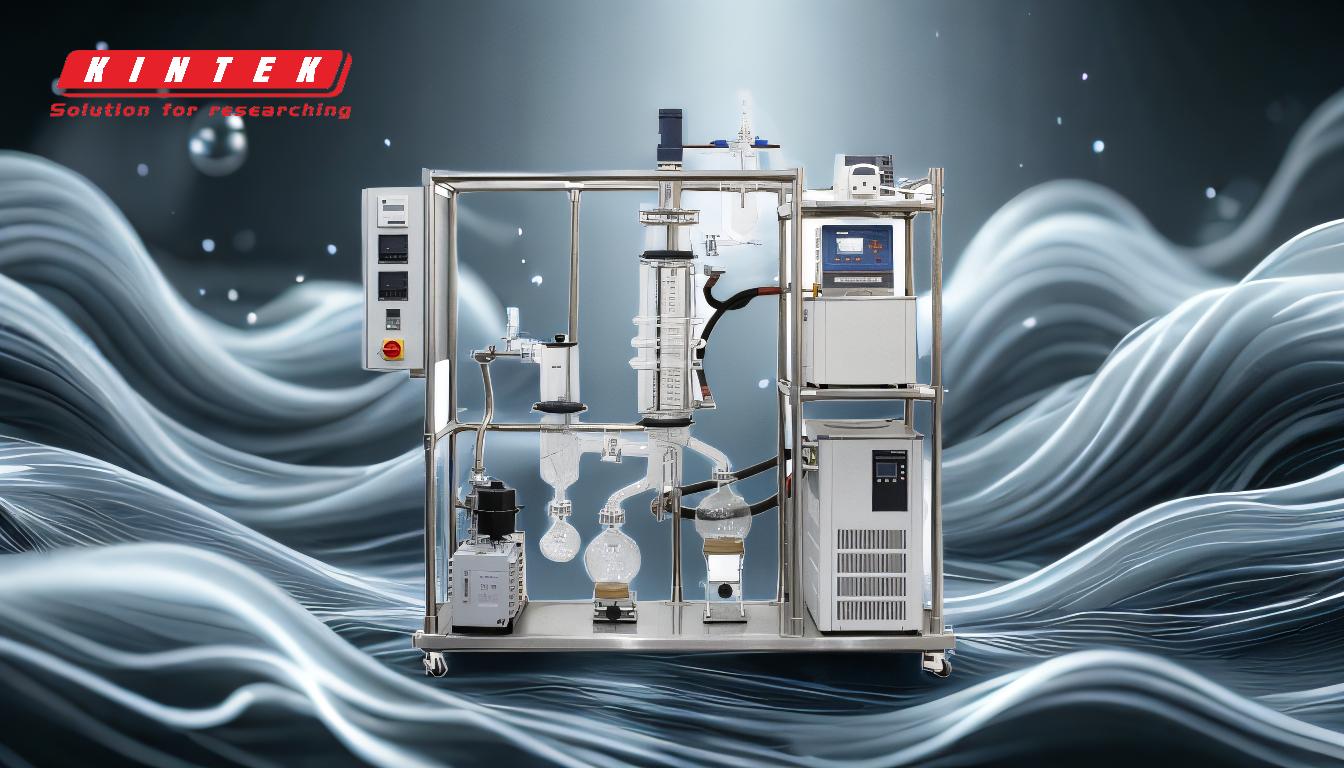Determining the boiling point of a liquid through distillation involves a systematic process that requires careful setup, monitoring, and control of temperature and pressure. The boiling point is identified by observing the temperature at which the liquid vaporizes and condenses back into a distillate. This process is facilitated by a distillation apparatus, which includes a thermometer to measure the temperature of the vapor. The key to accurate boiling point determination lies in maintaining stable conditions, ensuring proper equipment setup, and monitoring the distillation process closely.
Key Points Explained:

-
Equipment Setup:
- Thermometer Placement: A thermometer is attached to the top of the Y-adaptor in the distillation setup. This placement allows it to measure the temperature of the vapor, which corresponds to the boiling point of the liquid. The thermometer is typically added last to avoid breakage during setup.
- Insulation and Heating: The boiling flask and the bottom quarter of the distillation head are often wrapped with insulation rope to maintain consistent heating. The Vigreux column (if used) should remain visible to monitor the reaction. The heat source, such as an analog heating mantle, is set to an initial temperature (e.g., 60°C) and adjusted as needed to initiate and maintain the distillation process.
-
Temperature Control:
- Initial Heating: The distillation process begins by setting the heat to a moderate temperature (e.g., 60°C) and initiating stirring at a low speed (e.g., 200 RPM). This allows the liquid to heat gradually and evenly.
- Adjusting Heat: If no reaction occurs, the temperature is increased incrementally. For example, the heating knob on an analog mantle may be adjusted slightly past the halfway position until vaporization begins. This ensures the liquid reaches its boiling point without overheating.
-
Monitoring the Distillation Process:
- Observing the Thermometer: As the liquid heats up, the thermometer measures the temperature of the vapor. The boiling point is identified when the temperature stabilizes at a specific value, indicating that the liquid is vaporizing and condensing.
- Stirring and Heat Adjustments: Stirring is increased to 900-1000+ RPM as the fluid level decreases, ensuring uniform heating and preventing localized overheating. The temperature may be increased by an additional 10 degrees if the reaction subsides, ensuring complete distillation.
-
Stopping the Process:
- Completion of Distillation: Once the reaction stops and no more distillate flows, the heat, stirring, and vacuum pump (if used) are turned off. The system is then opened to atmospheric pressure by releasing the valve, ensuring safe handling of the apparatus.
-
Safety and Accuracy Considerations:
- Secure Connections: All connections in the distillation setup must be secure to prevent leaks or accidents. Proper insulation and visibility of the reaction zone are crucial for monitoring.
- Gradual Adjustments: Incremental adjustments to heat and stirring ensure accurate boiling point determination and prevent sudden boiling or splashing, which could lead to inaccurate readings or safety hazards.
By following these steps, the boiling point of a liquid can be accurately determined through distillation. The process relies on precise temperature measurement, controlled heating, and careful monitoring to ensure reliable results.
Summary Table:
| Step | Key Actions |
|---|---|
| Equipment Setup | - Thermometer placed at the Y-adaptor to measure vapor temperature. |
| - Insulate the boiling flask and distillation head for consistent heating. | |
| Temperature Control | - Start at 60°C, adjust heat incrementally to reach boiling point. |
| Monitoring Distillation | - Observe thermometer for stable temperature indicating boiling point. |
| - Increase stirring speed to 900-1000+ RPM as fluid level decreases. | |
| Stopping the Process | - Turn off heat, stirring, and vacuum pump once distillation is complete. |
| Safety & Accuracy | - Ensure secure connections and gradual adjustments for reliable results. |
Need help setting up your distillation process? Contact our experts today for personalized guidance!









